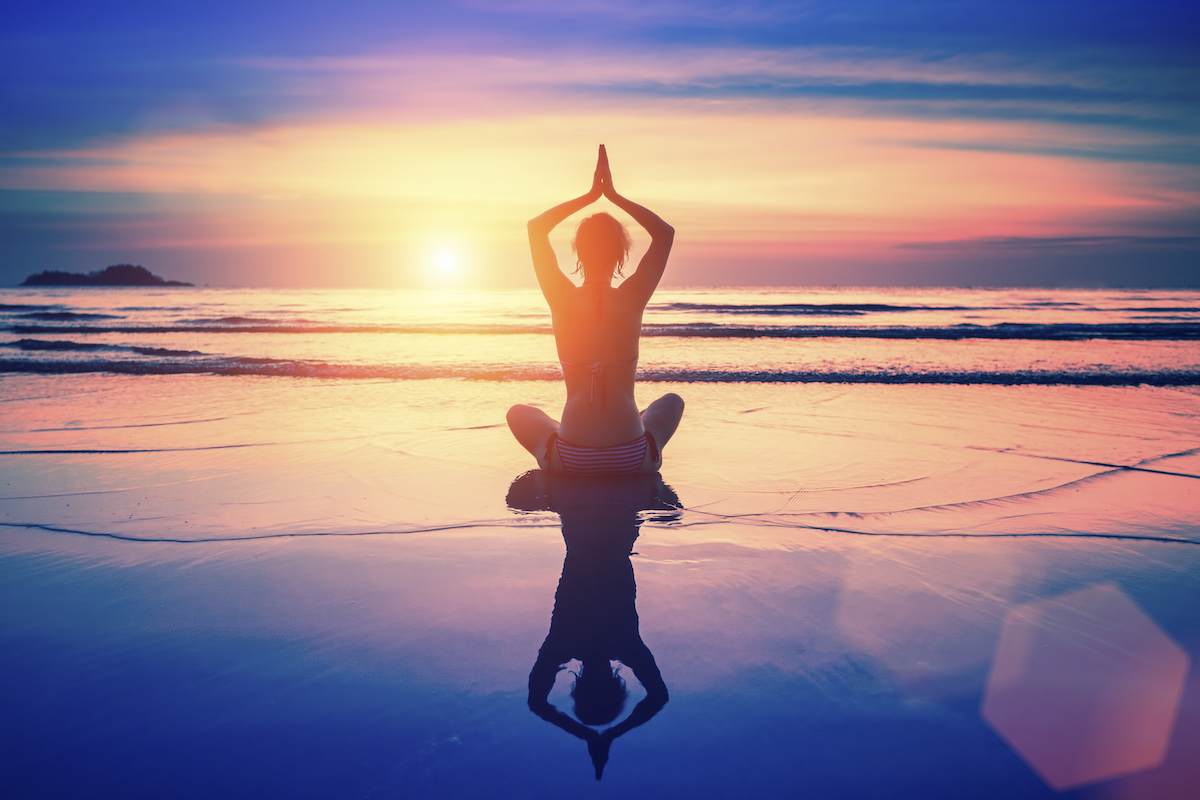
Creating a meditation practice may be one of the most challenging, but most important things you undertake for your present and future.
If you've wanted to create a practice, but don't quite know where to start. I hope the following will help.
#1 - Understand What Meditation Is All About
Meditation was first documented back in 5,000 BCE in the Indian subcontinent when there were images discovered of people seated in meditative postures with their eyes half-closed. Then, around 6th to 5th centuries BCE other forms of meditation were officially developed in Taoist China and Buddhist India.
Meditation is the practice of quieting the mind and connecting with the deepest parts of the human psyche. The goal is to submit and connect with the moment, even amidst extremely difficult times in life.
#2 - Know That It Doesn't Have to Be Complicated
There are all sorts of forms of meditation, but it's important for you to understand that if you can close your eyes, breathe deeply, and quiet your mind for even five minutes daily, you're winning the battle.
#3 - Your Mind Is Going to Wander
One of the silliest things most of us have told ourselves when trying to meditate is that we're not good at it. "My mind wanders and I can't get it to shut down — I'm horrible at it," a friend of mine once told a meditation teacher we were both studying with.
The teacher's response was a resounding, "That's the whole point! You're not supposed to be good at it! There's no such thing as a perfect meditator. It's not a competition."
We're all human and the human mind wanders. Yoga is a practice. It takes time to let go of our trouble making minds and realizing that things are much more simple than we think they are.
#4 - Create a Meditation Spot
Find a spot in your home where you can find peace and silence and make it your own. Consider adding candles, stones, an incense holder, a photo of a guru, or whatever connects to your heart.
It's supposed to be a place of inspiration where you can connect deeply with yourself. There's no right and wrongs — it's your refuge from the many storms of life that will come your way.
#5 - Start with as Little as 5 Minutes
Keep your meditation goal manageable to begin with. We can all manage five minutes, and you may be amazed at how your five-minute goal turns into 10 or more.
If you begin with a goal of 20 minutes or more, sometimes your effort turns into a horrifying chore. One that leads you to conclude you just can't meditate, which is utterly false.
#6 - Choose a Posture That Best Fits Your Needs
When you think of meditating, it's easy to see a person sitting perfectly — legs folded in lotus position, back straight as a board. Then, if you try to do it yourself, you find that your legs don't go that way and your back begins to ache.
Once again, it's easy to conclude that you just can't meditate. False again.
Find a posture that works for you. You can try the traditional posture, lie on your back or side, or whatever floats your boat. Just make sure that you can breathe deeply and try not to fall asleep.
The most important thing is that you find SILENCE and BREATHE.
#7 - Laugh at Your Wandering Mind
One of the most important things is not to get too rigid about what you think your mind should be doing. It's going to wander, and when it does take a deep breath, LAUGH, and maybe even say something like "I love you just the way you are."
Have fun with your meditation practice, and you'll ease into it beautifully.
#8 - Meditate Every Day for Best Results
You deserve at least five to 20 minutes per day to meditate, and the wonderful thing about it is that you can do it anywhere. Yes, it's great to create a space that you return to regularly, but you have the power to take your practice no matter where you roam.
Once you establish a regular practice, you'll find that it's a place and time of refuge. It's your grounding and saving grace when things get rough.
Last Words
Finally, it's important to mention that some individuals prefer prayer to meditation. While they are different in some ways, they are both so very valid with connecting with the deepest parts of our being.
If you prefer prayer to meditation, you can treat much of it the same way. Take five-plus minutes out of your day, create a space that you love to revisit regularly, and take time each and every day to pray.
Or, maybe you even want to combine meditation and prayer!
It's totally up to you.







